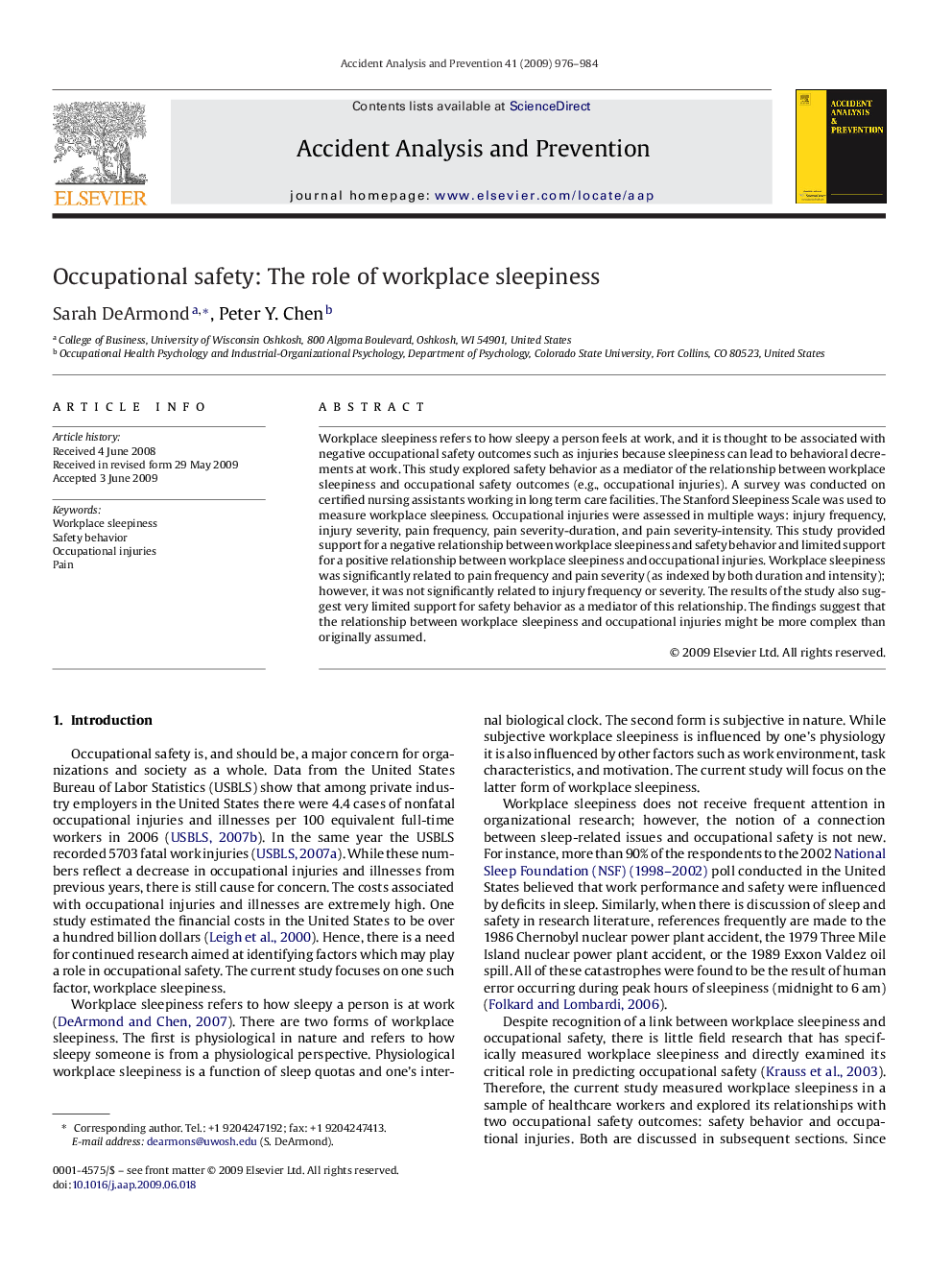| Article ID | Journal | Published Year | Pages | File Type |
|---|---|---|---|---|
| 573366 | Accident Analysis & Prevention | 2009 | 9 Pages |
Workplace sleepiness refers to how sleepy a person feels at work, and it is thought to be associated with negative occupational safety outcomes such as injuries because sleepiness can lead to behavioral decrements at work. This study explored safety behavior as a mediator of the relationship between workplace sleepiness and occupational safety outcomes (e.g., occupational injuries). A survey was conducted on certified nursing assistants working in long term care facilities. The Stanford Sleepiness Scale was used to measure workplace sleepiness. Occupational injuries were assessed in multiple ways: injury frequency, injury severity, pain frequency, pain severity-duration, and pain severity-intensity. This study provided support for a negative relationship between workplace sleepiness and safety behavior and limited support for a positive relationship between workplace sleepiness and occupational injuries. Workplace sleepiness was significantly related to pain frequency and pain severity (as indexed by both duration and intensity); however, it was not significantly related to injury frequency or severity. The results of the study also suggest very limited support for safety behavior as a mediator of this relationship. The findings suggest that the relationship between workplace sleepiness and occupational injuries might be more complex than originally assumed.
